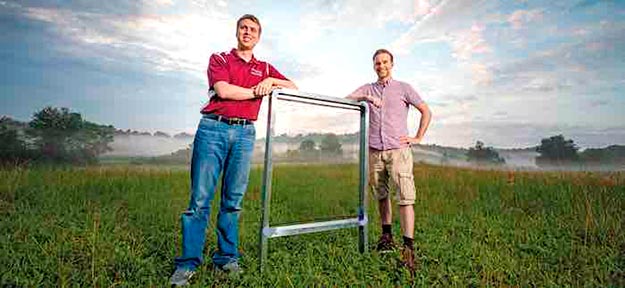Scientists estimate that half a billion people in the world lack sufficient water to meet their daily needs, and that number is only expected to rise with the ever-growing population and a changing climate. Therefore, researchers are working on technologies to soak up water from an abundant resource — the air. An article in Chemical & Engineering News (C&EN), the weekly newsmagazine of the American Chemical Society, describes several promising approaches.
Many water-harvesting devices are inspired by nature, Senior Correspondent Bethany Halford writes. For example, giant sequoia trees collect water from fog on their needles, which are parallel to one another. The water rolls downward and then drips to the tree’s roots. Using the same principle, researchers have developed a fog-harvesting apparatus (called a “fog harp”) with vertical parallel wires that catch microscopic droplets from the air and direct them into a water collector. Other fog-harvesting systems have been inspired by the tiny hairs on the Salsola crassa shrub, parallel grooves on rice leaves and the slippery lubricant of carnivorous pitcher plants.
However, different approaches are needed for arid regions that don’t often get fog. Some commercial water-from-air systems pass air through filters and over the cold surface of a condenser to produce water, much like a massive dehumidifier. Yet even these devices won’t work in the driest regions of the world. For those areas, researchers are exploring liquid or crystalline desiccants to pull and condense moisture from the air. In general, the biggest challenges facing water-from-air devices are reducing cost and scaling up from laboratory prototypes. If these can be resolved, the systems are likely to be important components of a multifaceted approach to addressing water scarcity, Halford writes.
Source: https://www.eurekalert.org/
Dear User/Visitor! Please, answer on our questions: tick off one of the positions – your answer will make us able to improve our site and make it more interesting and useful!


